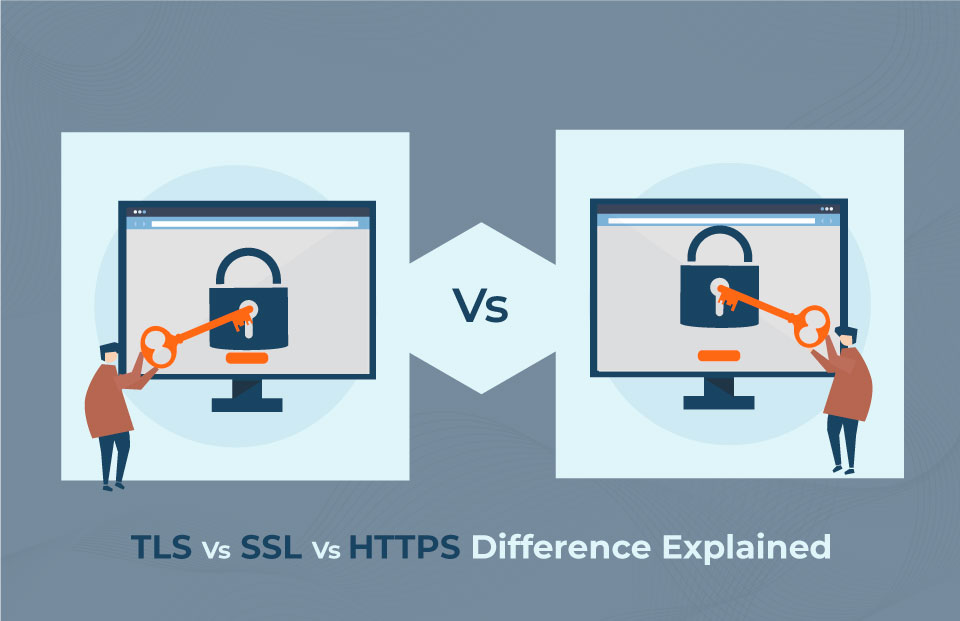In the digital age, the protection of personal information and data has become paramount, drawing upon not just technological frameworks but also ethical and spiritual ponderings. The acronyms TLS and HTTPS stand at the forefront of this evolution, grounding our understanding of online security in the context of both how the Internet operates and how it affects our lives. Understanding these two protocols is akin to exploring the foundations of a house: knowing what is beneath the surface allows us to appreciate the sanctity of what it protects.
Transport Layer Security (TLS) is a cryptographic protocol designed to secure communication over a computer network. Its predecessor, Secure Sockets Layer (SSL), has been largely deprecated, but the concepts it introduced remain vital. TLS employs a mix of symmetric and asymmetric encryption to safeguard data in transit. This means your information is not just tossed carelessly between endpoints but is wrapped in an electronic cloak of protection. It ensures that data sent from your device reaches its destination without being intercepted or altered, much like how a thief can be thwarted by a well-locked door, as Proverbs 4:23 reminds us, “Above all else, guard your heart, for everything you do flows from it.”
Conversely, Hypertext Transfer Protocol Secure (HTTPS) is an application of HTTP fortified with TLS. When you see that little padlock icon in your browser, it signals that your connection is secured—faithful pilgrims on a digital path, reassured of their safety. HTTPS is thus the method by which web browsers encrypt the communication channel, ultimately providing a trustworthy environment for sensitive activities such as financial transactions or sharing personal data. Reflecting on this, one might consider Psalm 91:1, affirming that “He who dwells in the secret place of the Most High shall abide under the shadow of the Almighty.” In a way, HTTPS offers a similar shelter, ensuring that our personal data is cloaked in confidentiality.
Yet, why should we care—indeed, why should we examine the nuances of TLS and HTTPS through a Christian perspective? The answer lies in the very essence of stewardship. In the Book of Genesis, humanity is called to care for creation and interact responsibly with the gifts bestowed upon them. This extends to the realm of the digital. Every byte of data represents not just an abstract series of numbers; it embodies moments, thoughts, and emotions—fragments of our lives and relationships. As digital stewards, we have both a responsibility and a calling to engage with technology that respects its users, safeguarded by principles echoing moral imperatives rather than mere technicalities.
In addition to their protective mechanisms, TLS and HTTPS bear implications for trust. Trust is the cornerstone of healthy relationships, both in personal interactions and in how we navigate online transactions. When a website utilizes HTTPS, it conveys a promise: this site values your privacy and aims to protect your data. Such transparency is reminiscent of Matthew 5:37, where it is written, “Let your yes be yes, and your no be no.” Just as one expects honesty in interpersonal communication, users ought to feel assured that their online interactions are equally forthright. The integration of TLS into website communication serves as a testament to ethical practice in a marketplace often plagued by ambiguity and deception.
Mirroring the biblical principle of loving one’s neighbor, a morally conscious digital environment emphasizes respect for users’ consent and privacy. The ability to communicate securely strengthens our ability to advocate for ethical practices. In practice, TLS and HTTPS provide a framework that encourages more robust standards of online behavior, urging a collective shift towards greater accountability—a nurturing community akin to the congregational spirit championed in Acts 2:44: “All the believers were together and had everything in common.”
However, it would be remiss to overlook the myriad threats that exist even in secure environments. Cyberattacks are a persistent reality, much like the trials faced by believers throughout history. The adversary constantly seeks vulnerabilities, endeavoring to unravel the very fabric of digital communion. Understanding TLS and HTTPS isn’t merely a technical necessity; it is a spiritually conducive practice, inviting vigilance and discernment. Just as 1 Peter 5:8 points out, “Be sober, be vigilant; because your adversary the devil walks about like a roaring lion, seeking whom he may devour.” In the web of security, fostering a culture of awareness serves to provide a bulwark against those predatory forces.
Ultimately, while TLS and HTTPS are essential cogs in the machinery of online security, their significance transcends mere functionality. Viewed through the prism of a Christian ethos, they elevate the conversation surrounding personal data protection into a moral imperative, an act of stewardship, and a covenant of trust. Just as Christians strive to align their actions with their values, so too should the digital landscape reflect principles that honor the sanctity of personal information. When we invest in technologies and practices rooted in integrity, we not only safeguard our data but also engage in a broader dialogue about our interconnectedness in an increasingly digital world.
The nuances of TLS and HTTPS are more than mere technical specifications; they hold the potential to inspire a paradigm shift in how we relate to our digital environment. This promise of security and integrity beckons curiosity, encouraging all to delve deeper into understanding the implications of their online interactions. With each secure connection made, we can aspire toward a digital embodiment of love, respect, and responsibility, enveloping our interactions within an ethical cocoon, reflective of a higher calling.








Leave a Comment